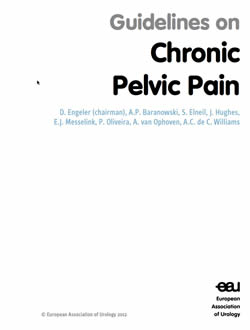By Jill Heidi Osborne, MA
One of the barriers that IC patients face is a general lack of understanding of the many conditions which can cause and/or contribute to our pelvic pain. This lack of understanding has contributed to incorrect diagnoses, treatments, inappropriate hysterectomies and, often, years of suffering before the patient receives a correct diagnosis for either their bladder, bowel or other pelvic pain disorder.
The patient with chronic pelvic pain faces a complex and harrowing journey. Many wonder why random bodily systems become dysfunctional. In my case, I developed frequency/urgency in my early teens, vulvodynia in high school, polycystic ovaries in college, IBS in my early 20’s, allergies in my mid 20’s and bladder pain in my early 30’s and so forth. As the patient, I was confused and frightened. I had no idea why these were happening and, worse, neither did my physicians or my family members. When my friends were happily beginning families, I was stuck at home dealing with several different types of pain and discomfort. I was devastated.
So, it is with great respect and appreciation that I share this newly updated guideline from the European Association of Urology that can give comfort and hope to patients who are struggling with complex symptoms. The EAU is the first medical association to describe these multiple conditions in one cohesive document that validates patients and provides practical and evidence based treatment guidelines for doctors who are struggling to diagnose and treat pelvic pain.
This is an ideal training document that I hope will be featured in every medical school. It will improve the ability of physicians to do a thorough diagnostic workup for patients struggling with pelvic pain. It will generate empathy for patients who are often disregarded by medical care providers. It can help reveal perhaps the most complex cases of pelvic pain, such as pudendal neuralgia. My hope is that it will also reduce the fairly high rate of inappropriate hysterectomy and/or other surgeries for patients.
The guideline feature diagnostic and treatment information on:
- Urological Aspects of Chronic Pelvic Pain – prostate pain, bladder pain syndrome (BPS/IC), genital pain syndrome, urethral pain syndrome
- Gynecological Aspects of Chronic Pelvic Pain
- Gastrointestinal Aspects of Chronic Pelvic Pain
- Peripheral Nerve Pain Syndromes – including pudendal neuralgia
- Sexological Aspects of Chronic Pelvic Pain (i.e. sexual dysfunction
- Psychological Aspects of Chronic Pelvic Pain
- Pelvic Floor Function and Chronic Pelvic Pain
- General Treatment of Chronic Pelvic Pain – analgesics, opioids, nerve blogs, TENS, neuromodulation, etc.
Read the EAU Chronic Pelvic Pain Guidelines
For IC and pelvic pain activists, I encourage you to print out the guidelines (yes, it’s over 100 pages long) and share with your medical care providers, especially if you’re struggling with pain and suspect that your diagnosis is in error.
https://www.ic-network.com/downloads/EAUguidelineschronicpelvicpain2014.pdf

